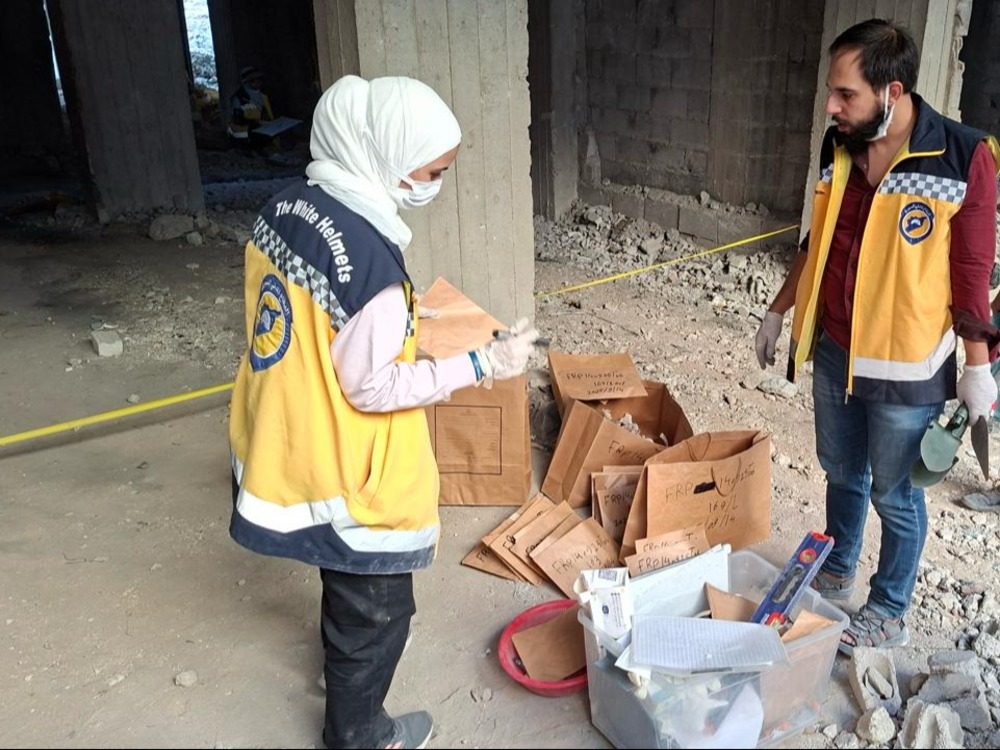
A string of grim discoveries across Syria in recent months has revealed the growing scale of mass killings carried out under the former regime of Bashar al-Assad. Since August, Civil Defense teams and the National Commission for Missing Persons (NCMP) exhumed human remains from more than a dozen sites spanning Homs, Damascus, and Hama, exposing what investigators call the “systematic disposal” of tens of thousands of victims of torture, execution, and enforced disappearance.
In Homs province, civilians discovered unidentified remains on August 31 in the Houla region and the Karm al-Zeitoun neighborhood, areas that witnessed some of the war’s earliest massacres. Local sources told Syria TV that victims found in Karm al-Zeitoun were bound and shot at close range, a killing method consistent with the 2012 massacre there that left at least 224 civilians dead, according to the Syrian Network for Human Rights.
Over the following week, six additional bodies were recovered from sites in Homs and its western countryside. “The tragedy is not over despite the fall of the regime,” said Ahmad Bakkar, spokesperson for the Homs Civil Defense Directorate. “We still have thousands of missing people who have not received justice.”
Damascus Becomes the Center of Excavations
By mid-September, the discoveries had spread to the capital. On September 15, Civil Defense teams uncovered a mass grave in Damascus’s Tadamon neighborhood containing the remains of at least five people, including evidence of plastic handcuffs used to bind victims. Days later, a much larger grave was found in the nearby town of Otaiba, holding over 170 bodies believed to be victims of a 2014 massacre. Public Prosecutor Muhammad Omar Hajar described to the the Otaiba site to Syrian Arab News Agency (SANA) as “a living testament to the scale of violations committed by the ousted regime.”
The following week, mass graves surfaced in multiple Damascus districts, including Midan and Qadam, where sewage workers discovered skeletal remains during maintenance operations. Prosecutor Hussam Khattab confirmed on September 23 that five bodies, including those of two children, had been exhumed from a sewage treatment plant, noting that “criminal suspicions warrant further investigation.”
Evidence of a Systematic Cover-Up
The most disturbing revelation came in mid-October when a Reuters investigation exposed a secret regime operation, code-named “Operation Move Earth,” to relocate thousands of corpses from a mass grave in Qutayfah to a hidden site in the Dumayr desert between 2019 and 2021. Witnesses described six to eight trucks moving bodies nightly under direct military supervision. The new site reportedly contains at least 34 trenches, each two kilometers long, possibly holding tens of thousands of victims.
Former Civil Defense head, and current Minister of Emergency and Disaster Management, Raed al-Saleh said the discovery confirms “a bleeding wound that will not heal until the fate of every missing person is known.” The NCMP estimates that between 120,000 and 300,000 people disappeared during Assad’s rule, with 63 mass graves documented so far.
Unfinished Work of Justice
Forensic experts warn that chaotic exhumations threaten vital evidence needed for accountability. In August Muhammad Reza Jalkhi, NCMP head, announced plans to build a national DNA databank to aid identification efforts. But limited funding and expertise continue to delay progress.
As more graves surface, the scale of Syria’s hidden death machine grows clearer. Each excavation, investigators say, brings the country one step closer to confronting the full magnitude of decades of atrocities—and to finally giving names to the thousands who vanished in silence.









